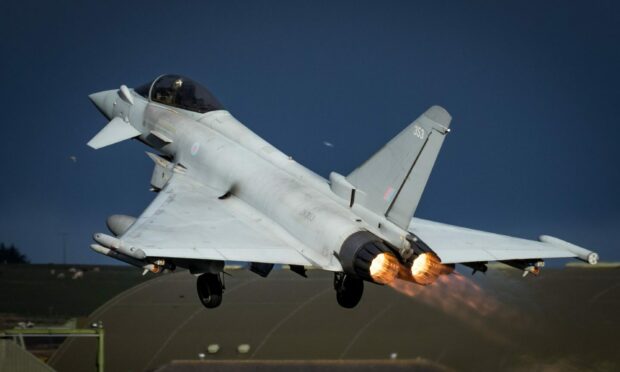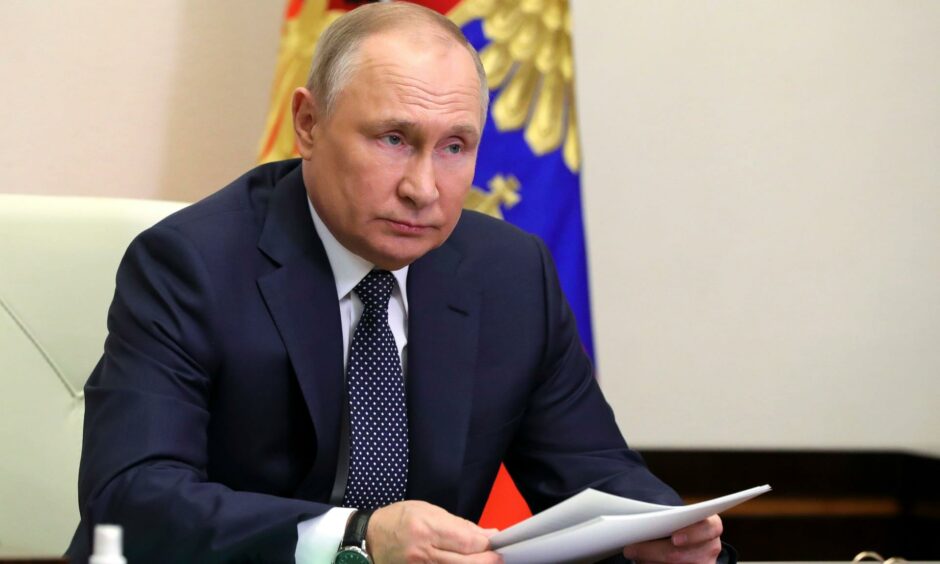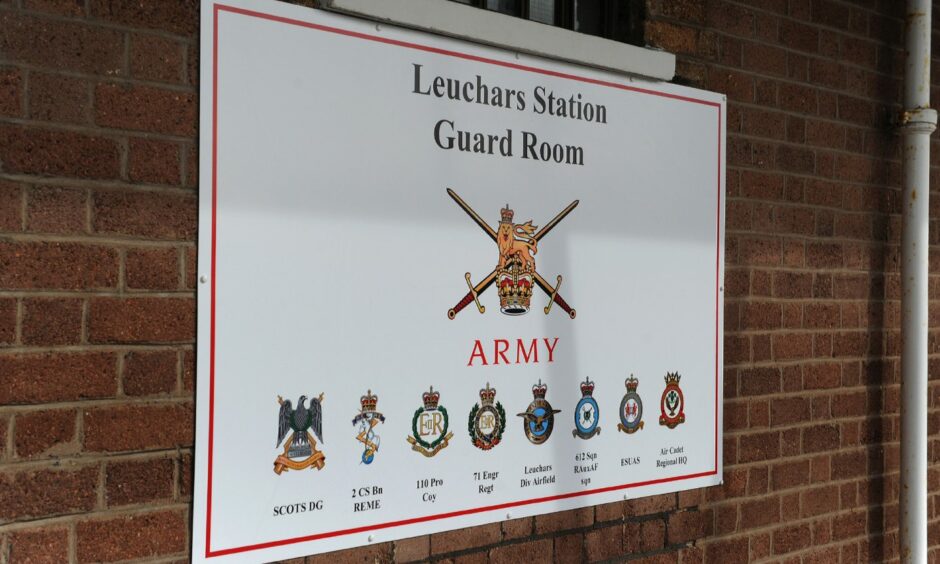Defence chiefs have been urged to bring RAF jets back to Leuchars more regularly to help prevent a UK missile strike by Vladimir Putin’s Russia.
Justin Bronk, a senior research fellow at the respected Royal United Services Institute (RUSI) think tank, said the RAF’s decision to pull out of bases such as Leuchars had left its small number of remaining stations as “inviting targets” in the event of a war.
He believes the Ministry of Defence (MoD) should either invest in air defences at key sites, including RAF Lossiemouth in Moray, or use the airfields at Leuchars and Kinloss more often.
The tactic, used during the Cold War, would aim to show Putin that he could not destroy the RAF by launching missile strikes on just a handful of main bases.
Russia has warned of the risk of a direct conflict with NATO as Britain and other western powers continue to supply weapons to help Ukraine defend itself from the Russian invasion.
The escalating tensions, including fears Putin could even detonate a nuclear bomb, have triggered a fresh debate over UK defence policy and investment.
Why Leuchars?
Leuchars in Fife was controversially closed as an RAF base in 2015, leaving Lossiemouth as the main air station in Scotland.
Mr Bronk, who is editor of RUSI Defence Systems online journal and has advised Westminster’s defence select committee on RAF investment, said the decision to shut bases such as Leuchars and Kinloss had made Lossiemouth a more obvious target.
“There were pressing financial reasons that fed into the decision to close multiple RAF bases over the past couple of decades,” he said.
“However, it is unavoidably true that concentrating all our air assets on a very small number of large main operating bases like RAF Lossiemouth makes them much more inviting targets for Russian long range strike capabilities in the event of a clash between Russia and NATO forces.”
Cold War tactic
The expert said bases such as Lossiemouth should either be equipped with greater defensive weapons systems to discourage an attack, or the RAF should start using the airfields at the likes of Leuchars and Kinloss more often.
“The latter would involve RAF fast jets and possible other capabilities like the P-8 Maritime Patrol aircraft regularly conducting temporary operations from either deactivated but still maintained runways like RAF Leuchars and Kinloss, or civilian airports, or both, to show that in a crisis, the force would be able to avoid complete destruction by Russian strikes on the main bases alone.
“Dispersal would be cheaper than layered air defences, but it doesn’t solve the vulnerability of the fixed support infrastructure to keep aircraft maintained and flying long term, which is also on those bases.”
Leuchars is now home to the Army’s Royal Scots Dragoon Guards, and the Black Watch is also due to switch to the Fife site when the battalion leaves Fort George, by 2032.
However, the base temporarily took over the “quick reaction alert” duties in 2020 when upgrade works were being carried out at RAF Lossiemouth.
Under the arrangement, Typhoon fast jets returned to Leuchars, standing ready to respond to threats to UK air space.
Defence chiefs confirmed last year that the airfield in Fife will be maintained over the long-term to act as back-up to Lossiemouth.


